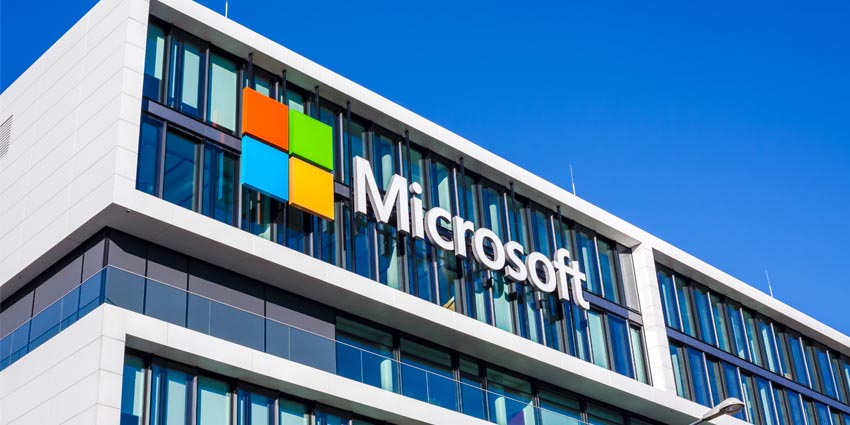Microsoft has published its quarterly earnings, reporting the usual strong revenue growth that the market has come to expect.
The Redmond-based vendor reported its best-ever quarterly sales for the fifth quarter in a row, cementing its newfound status as the world’s most valuable company (albeit with Apple’s earnings just around the corner).
Overall sales for the quarter ending 31 December 2023 climbed 18 percent to $62bn, while revenue attributed to Microsoft Cloud leapt a quarter to $33.7bn.
We’ve picked out four key takeaways from the earnings release and accompanying investor call featuring Microsoft CEO Satya Nadella and CFO Amy Hood.
Teams Takes a Backseat
Teams has been the darling of Microsoft’s earnings call since 2020 but barely got a mention this time around as generative AI and Copilot stole the spotlight.
Teams was given a couple of token gesture mentions, but Microsoft stopped short of revealing updated monthly active user figures.
Nadella said: “When it comes to Teams, we again saw record usage as organizations brought together collaboration, chat, meetings, and calling on one platform.
“And Teams has also become a new entry point for us. More than two-thirds of our enterprise Teams customers buy Phone, Rooms, or Premium.
“All this innovation is driving growth across Microsoft 365.”
Nadella also mentioned Teams one more time in relation to Copilot (see below).
Office Subscriptions Grow
The CEO and Hood focused more on Office 365 subscriptions than Teams user growth on the earnings call.
Confusingly, Microsoft says that Office 365 is now known as Microsoft 365 but still refers to it as Office on earnings calls.
Nadella revealed that Microsoft now has more than 400 million paid Office 365 seats, name-dropping businesses like BP, Elanco and ING Bank as high-profile customers taking E5 licences for their employees during the reported quarter.
Office 365 commercial revenue grew 17 percent, while seat growth was nine percent.
Copilot and AI Dominate
Copilot – and all things artificial intelligence – dominated the earnings call as expected.
It can be hard to digest the success Microsoft is seeing with AI because it seeps through all units and segments of its business.
Azure AI – a platform for building apps and custom “copilots” – was of particular interest to investors, with Microsoft revealing it now has 53,000 customers (most of which are new to Azure over the past 12 months).
Microsoft 365 Copilot also garnered much attention, with CEO Nadella offering a glimpse into its growth.
“Our own research, as well as external studies, show as much as a 70% improvement in productivity using generative AI for specific work tasks,” he said.
“Overall, early Copilot for Microsoft 365 users were 29 percent faster in a series of tasks like searching, writing, and summarizing.
“Two months in, we’ve seen faster adoption than either our E3 or E5 suites as enterprises like Dentsu, Honda, Pfizer all deploy Copilot to their employees.”
Copilot had initially only been available to large enterprises buying huge batches of licences, but it was opened up to SMBs earlier this year.
Devices Sales Decline as Focus Changes
One of the few areas of Microsoft’s business to see a decline in the quarter was devices, with sales down nine percent year on year.
This decline was, however, softer than Microsoft had predicted when reporting on the previous three-month period – which CFO Hood attributed to “stronger execution in the commercial segment”.
She explained that Microsoft had expected revenue to decline in the devices segment as the vendor turned its attention to higher-margin products.
Hood highlighted devices as just one segment that has contributed to margin improvements, largely because of the impact of AI on Microsoft’s own workforce.
There’s also been really good work put in by many teams on improving the gross margin of the products,” she said.
“We talked about it with Office 365. We talked about it in Azure Core. We even talked about it across our devices portfolio, where we’ve seen materially, improvements over the course of the year.
“When you kind of take improvements at the gross margin level, plus this consistency of re-pivoting a workforce toward the AI-first work we’re doing without adding material number of people to the workforce, you end up with that type of leverage.
“We still need to be investing, and so the important part [is to] invest toward the thing that’s going to shape the next decade and continue to stay focused on being able to deliver your day-to-day commitments.”
Best of the Rest
Of course, there are huge parts of Microsoft’s portfolio that are not connected to the unified communications and collaboration space.
Xbox and gaming received more attention than usual, largely because of Microsoft’s reworked Activision Blizzard acquisition that has finally been given global approval.
Xbox content and services revenue was up 61 percent – 55 points of which was attributed to the takeover.
Search and news revenue – which is driven by Bing – was up eight percent (excluding traffic acquisition costs) while Windows and Windows OEM sales were up nine percent and 11 percent respectively.
Sales for Dynamics 365 rocketed 25 per cent but Microsoft warned that bookings growth was hit by weaker demand for new business, primarily in CRM and ERP workloads.







